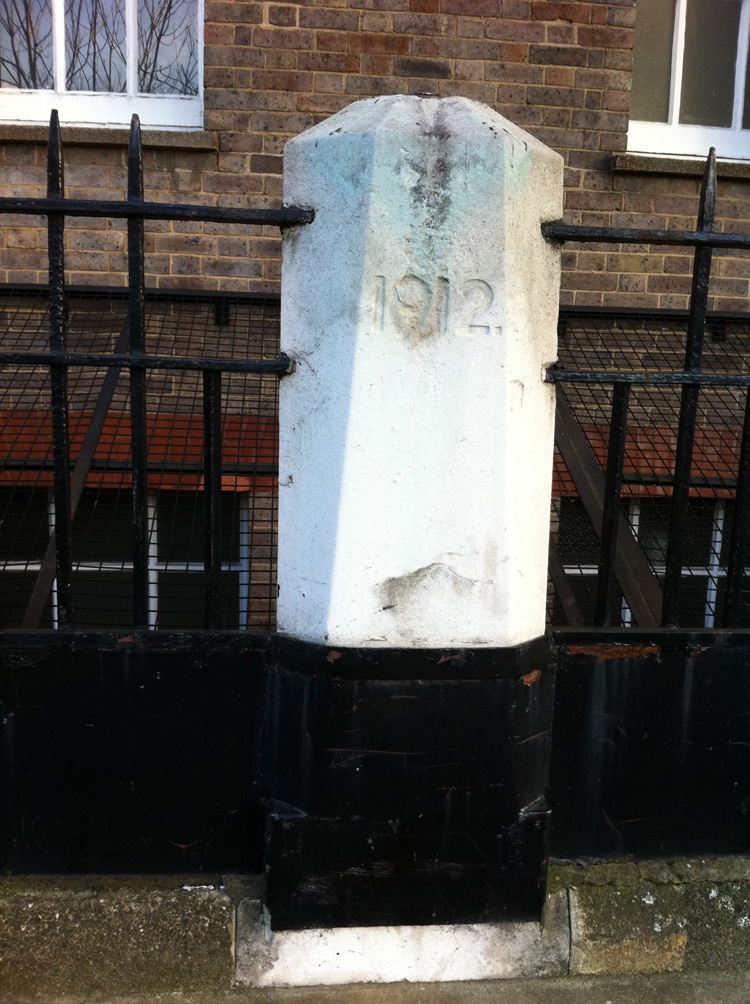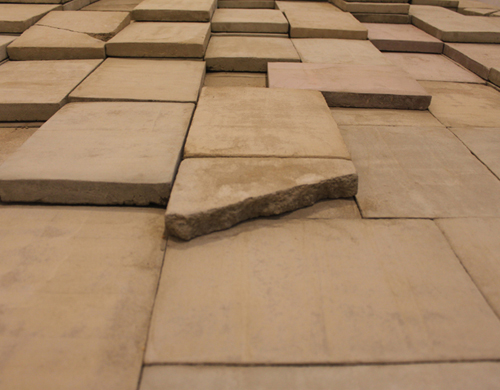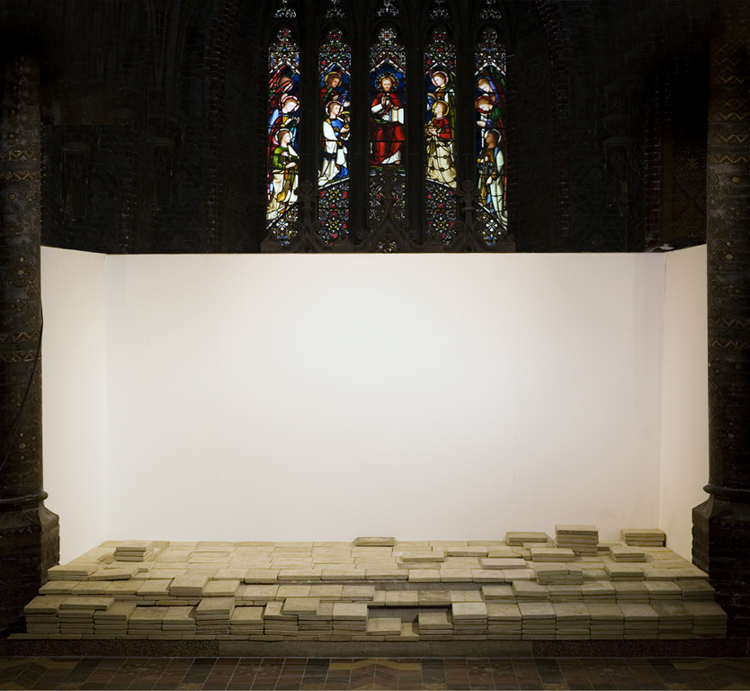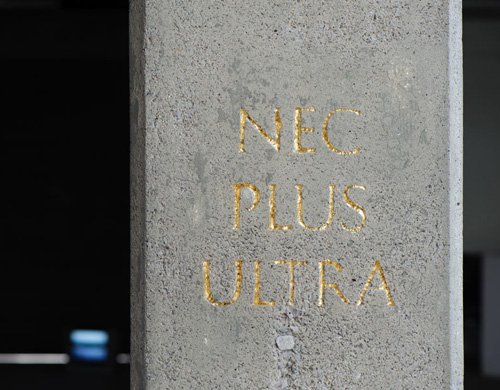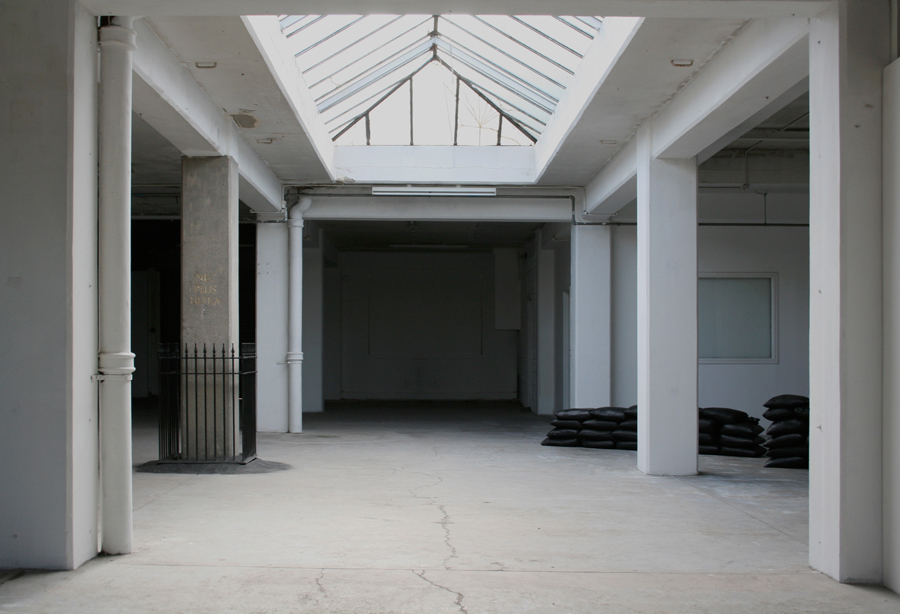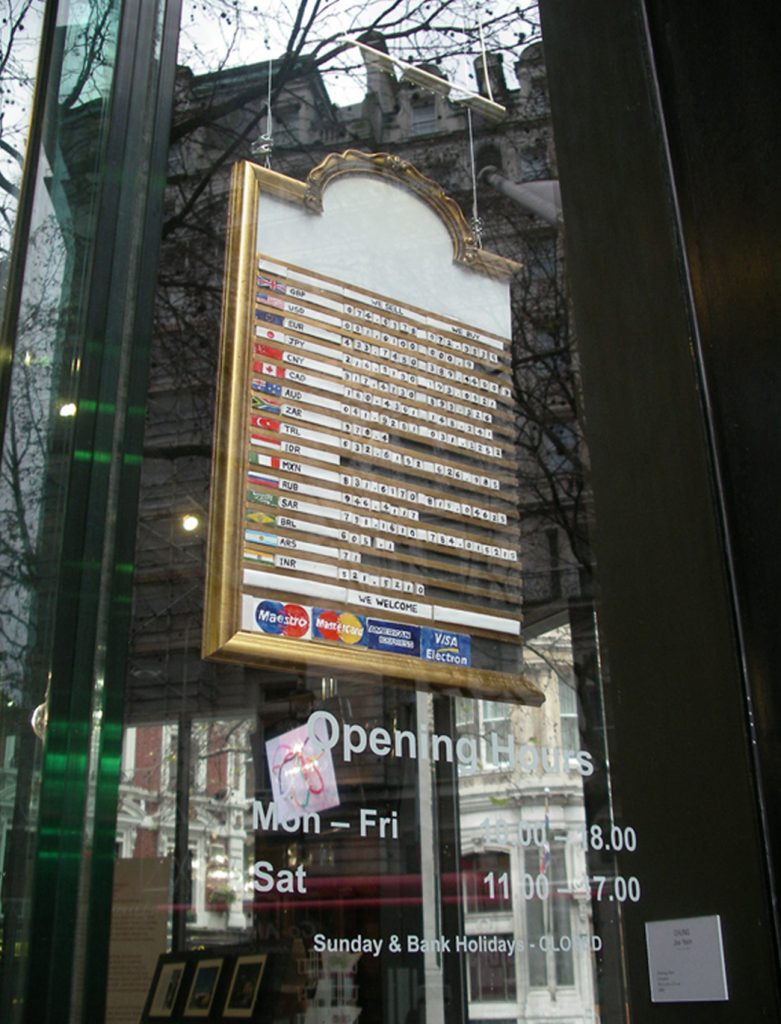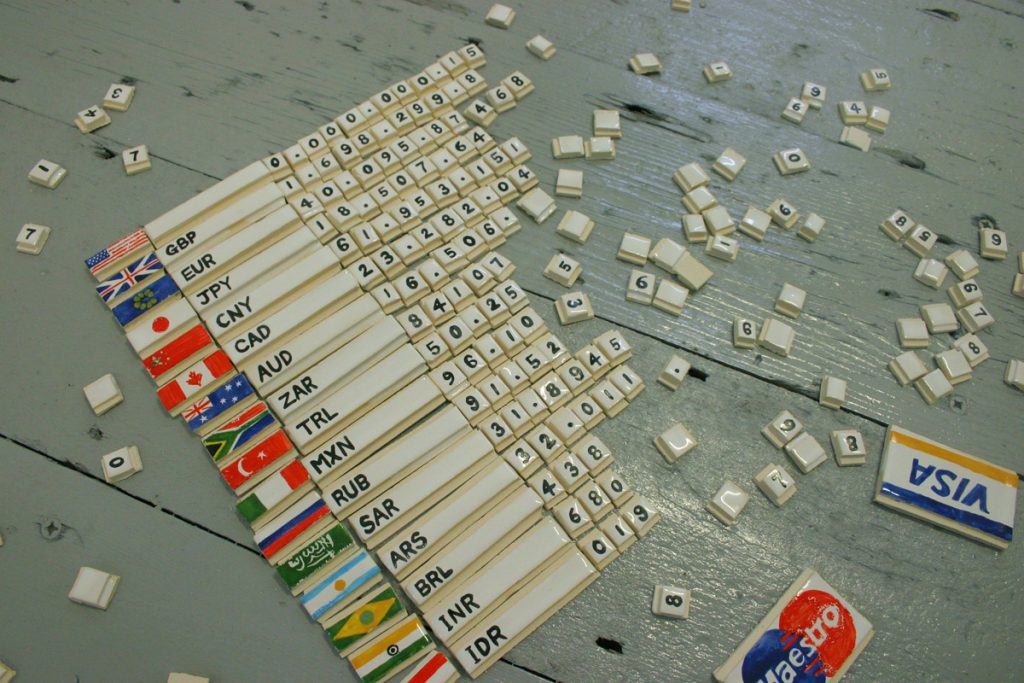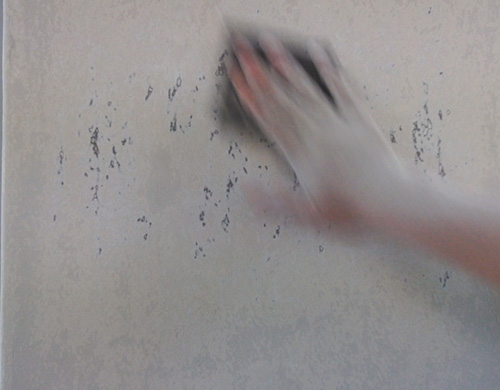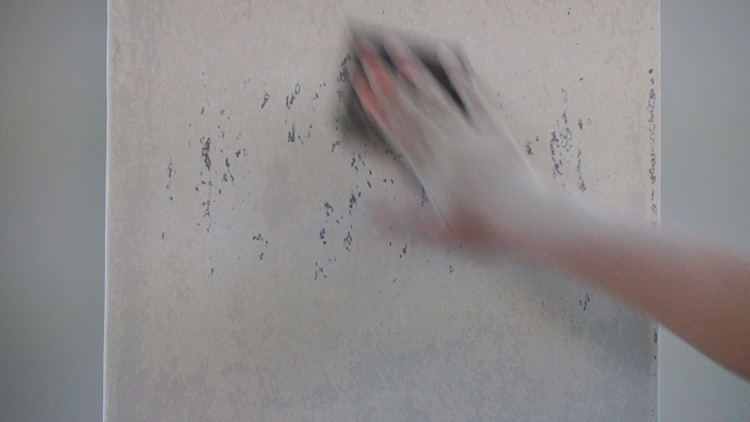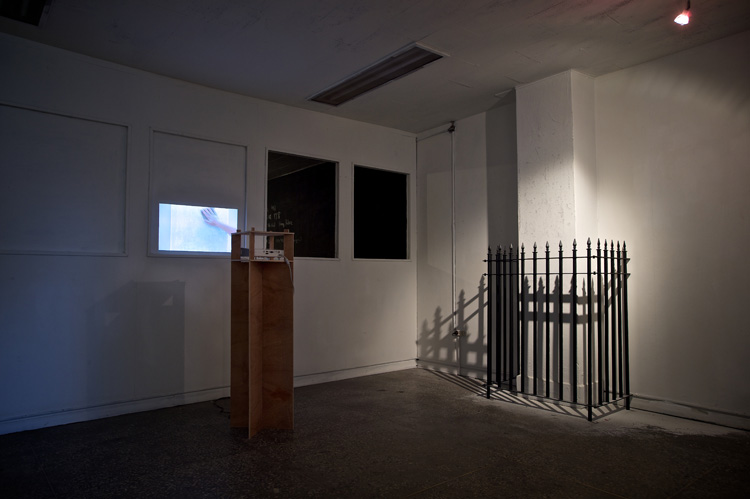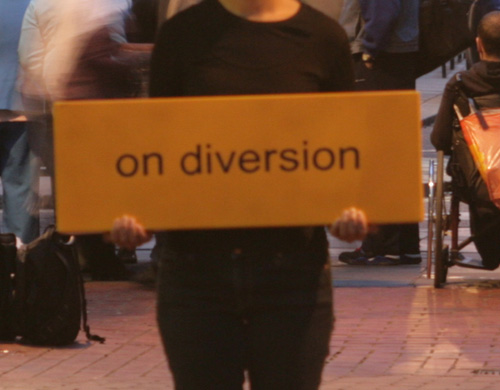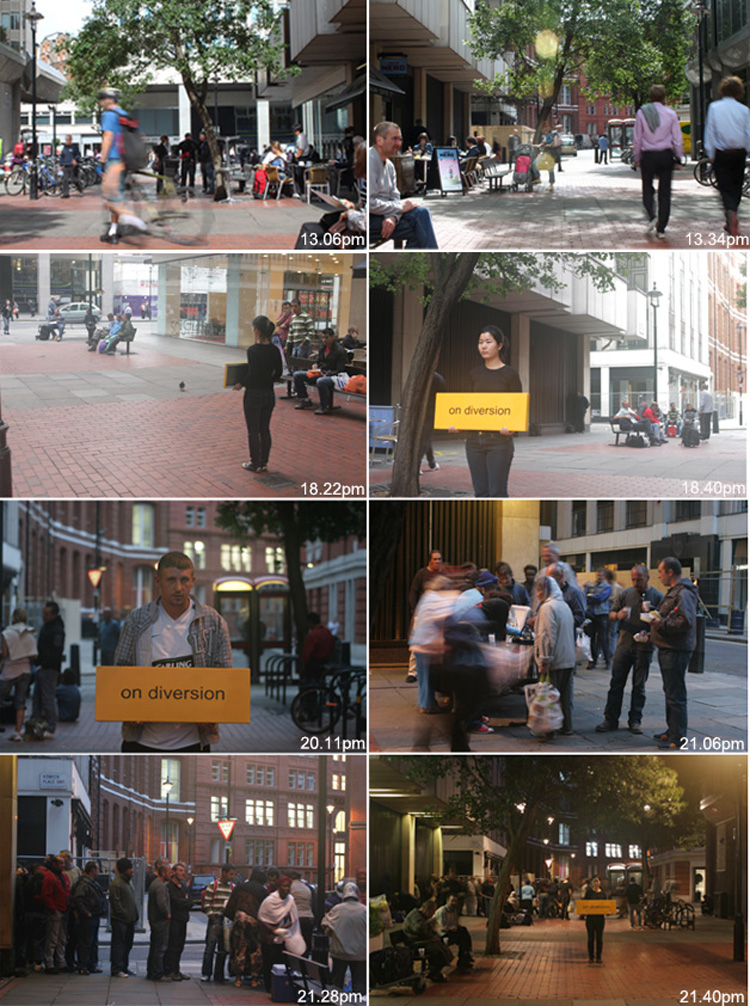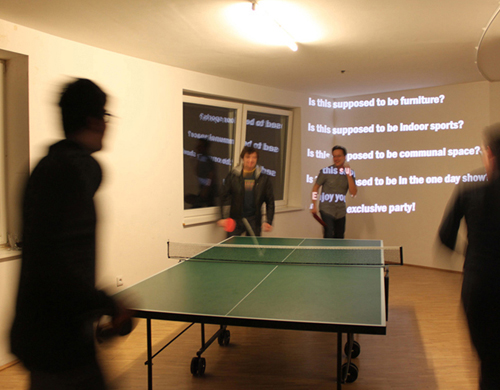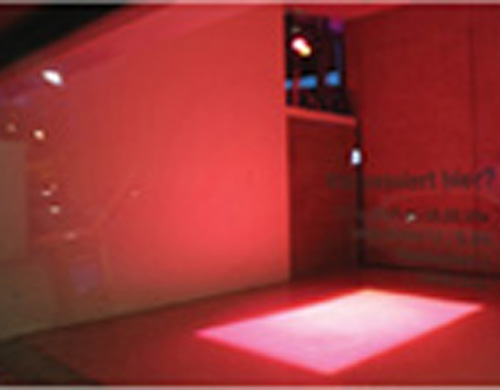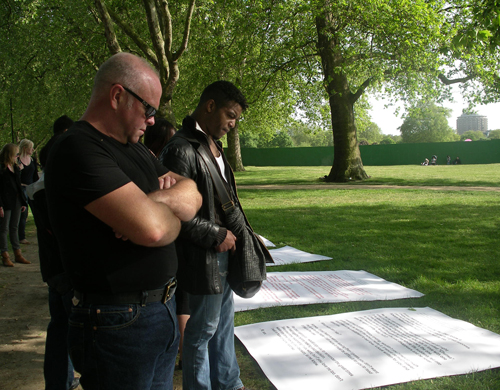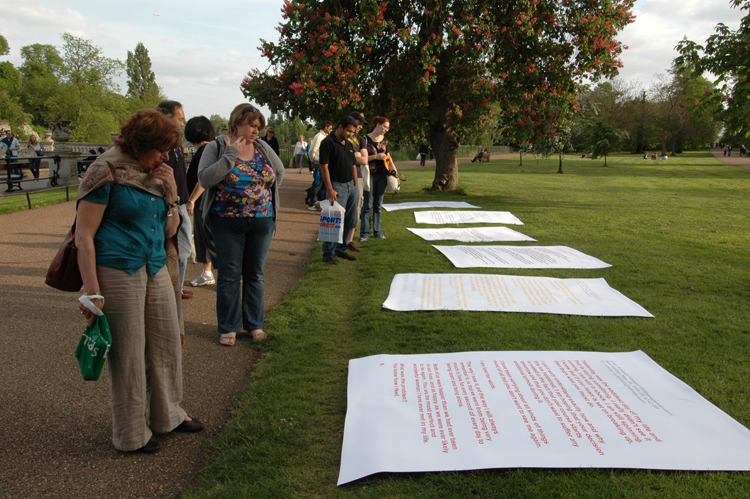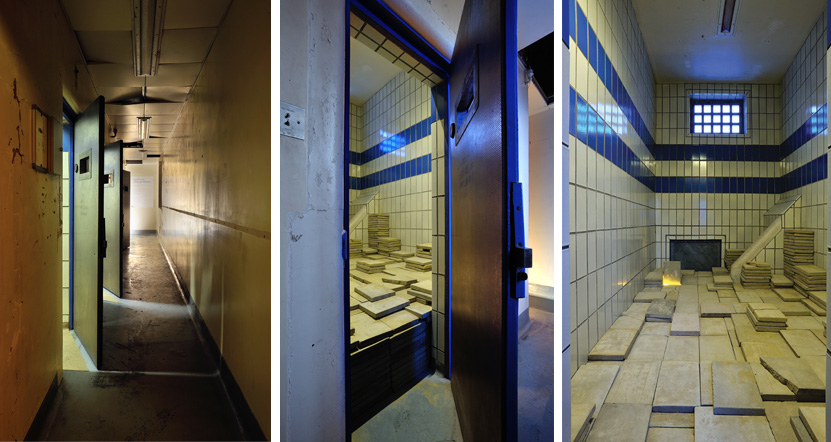
This was shown at the Old Police Station (the former Deptford Police Station, London). Although the old Edwardian building itself is a grade 2 listed English heritage site, only the four individual cell spaces show any apparent evidence of their original function as the police station. Without any information about the site, the cells are hard to discover and rather difficult to access because of their hidden location and lack of public awareness about the site. The abandoned cell spaces might be defined as an example of urban ruins or, in Solnit’s vocabulary, the unconscious city. The project, thus, explores a way of ‘situating’ an artistic event in the location to arouse the unconsciousness of the cell space.
In the project, Chung raises the question of how the cell space might act as a commemorative or even monumental space where various events have taken place and been forgotten. Musil points out the contradictory features of monuments: conspicuously inconspicuous, erected for public attention while eluding popular perception. Chung considers the historical monument of the cell space as a dead site sleeping in the sea of oblivion.
In <Century>, Chung made hundreds of rectangular shaped cement tablets and piled them up from the floor of the prison cell. Each cement tablet, like an opening plaque for a building, functions as a commemorative unit of the events in the cell, which has made its own history both as a real prison and as a venue for cultural events. Even though in 2012 the site celebrated its one hundred year anniversary, the site escapes public attention. Chung’s repetitive and continuous actions of making and accumulating tablets without any inscription invites curiosity about the tomb-like space. The number of tablets placed in the cell allude to accumulating layers of past time. The single upright tablet lit by vague light implies the present situation and the current artistic action. Among the tablets inside the cell, the upright tablet plays a role as an intriguing clue for the public to recognize the cell as a monumental space in the local community.
Jay Jungin Hwang (independent curator)
